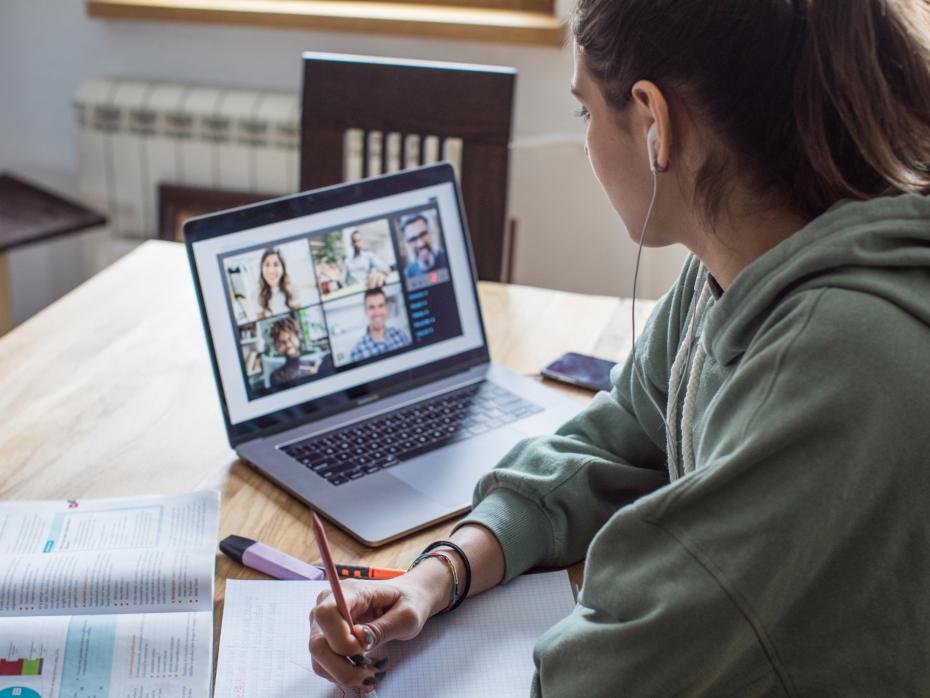
The power of peer to peer: how and why to encourage your students to learn from each other
Peer-to-peer learning brings major benefits for students and instructors. Here, Zachary Walker explains how to encourage your students to learn from each other and why this can be so effective when teaching online
Key Details
This video will cover:
00:16 How to train students to seek answers from their peers before approaching their teachers
01:11 Why ring-fencing the time you are available for feedback and answers is important
01:50 Effective ways to foster healthy discussion during online classes
Transcript
Hi everybody, I’m Dr Zachary Walker. I’m at the Institute of Education at the University College of London.
I wanted to go through quickly here six easy, fast ways that you can increase the peer-to-peer learning in your online classes.
So, the first one is we have a policy called “three before me”, and if you’re a teacher you’ll know what this is.
This means that students have to go to three of their peers before they can come to me with any question.
This may sound like it’s a bit harsh, but we explain to our students that this is because we want to create an environment where you all learn from each other, and that you go to each other first with questions because there’s a lot of collective intelligence in our classes and we’re not the only one who knows things.
So, we have “three before me” and again what this does is when students come to me and say, you know, when they have a question about a process, when is something due or about specific content, I say: “Well, who else did you ask?”
And if they’ve asked three other people and no one else knew, then that means it’s something I probably need to go over again with the entire class. But it also means that they have started to talk and start to learn from each other, and that means 90 per cent of the stuff never comes to me. Instead, we’ve created a culture of learning within our class.
The second thing is structured availability.
My students know that on Tuesdays and Fridays is when I answer emails for their class and so they don’t expect answers outside of that time. So, if they’ve got a burning question that they need answered, they have to go to each other.
Now again, I explained to them that you can only expect answers on Tuesday and Friday. This is for your mental health but also for mine, because for those of us who have taught online for a while and for those who are just starting, you know that you start answering emails all the time if you’re not careful and have to respond.
So, I let students know that only on Tuesdays and Fridays are when you’re going to get responses about this class from me. And again, if you have other questions, go to your classmates.
The third thing is talk early, talk easy, talk often.
So, if you’re doing synchronous sessions, it’s really helpful if you start off with a verbal activity.
We can’t kind of lecture to them on a synchronous session for 20 or 30 or 40 minutes and then turn it over to them and expect them to engage, expect them to go back and forth with each other.
So I always start every class with a quick little easy activity that they are getting to know each other, and that could be something as simple as, “What did we learn last week?” to “What are some questions you have about this content?”, where they have to share from each other.
But I want them communicating, I want them being in constant contact throughout the day.
The fourth thing is the discussion boards or discussion forums.
Now, whenever I do asynchronous learning, one of the things that we do is we say, three things are really important.
Number one, post your thought, number two, post a question you still have, but then number three, you have to answer someone else’s question.
So again, I’m monitoring this and kind of moderating the answers as they come in. But what happens is that now I’m answering someone else’s question to help them kind of guide them in the right way. But most of the answers are coming from within the class and that can be really, really helpful, too.
Number five, give them no choice.
I’ll often start, especially once they get to know each other a little bit, the first, you know, the third or fourth week maybe, is I’ll just say: “OK, here’s a question, figure it out. We’ve got five minutes on this synchronous session. I want you all to figure out the answer amongst yourselves.”
And so then, I’ll just mute myself and I’ll watch, so they know that I’m there, my video will be on. But, you know, it may take a while, but the first person will finally say: “Well, I think it’s this” or “What do you all think?” and then the conversation will start.
So again you can only do this if you have, you know, a fun and kind of a welcoming personality and invite them to learn with you. But that can be really helpful.
The final thing is an annotated resource list.
So, what we do on an annotated resource list is I’ll give them the topic a couple of weeks ahead of time and say that everyone has to come up with one resource about this topic. It can be an article, it could be a video, it could be an app, it could be a website.
Anything that you wanted, but it has to be about this particular topic.
And then what happens is when they come into class, we review those, so they cannot put down, and this is critical, they cannot put down a resource that anyone else has already shared.
So, if I have 26 students in my class, they show up on the day that we’re actually going to talk about this topic and the first thing we do is review those 26 resources. We might only get 15 or 16 good ones because we have to eliminate nine or 10 that weren’t so good. But now we’ve got 15 or 16 resources that they’ve kind of crowdsourced, that they’ve collated together. And so that can be really helpful.
So, in review, six ways that you can increase peer-to-peer learning in your class: number one, three before me; number two, structured availability; number three, talk early, talk often, talk easy; number four, think about your discussion boards, post a question and answer someone else’s question; number five, give them no choice; and number six, have them create an annotated resource list.
So, hope this was helpful and please do reach out if you have any questions. Again, Dr Zachary Walker at the Institute of Education, University College of London. Thanks.
This video was produced by Zachary Walker, associate professor and academic head of teaching and learning with the Department of Psychology and Human Development and the Institute of Education, .

.jpg?itok=ladOJIOO)
